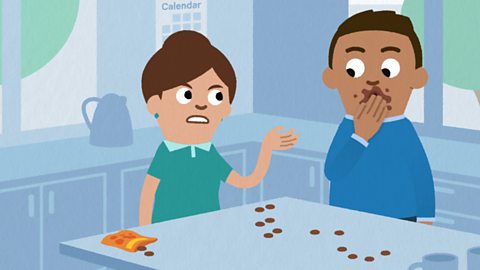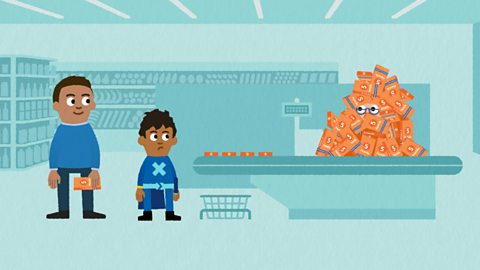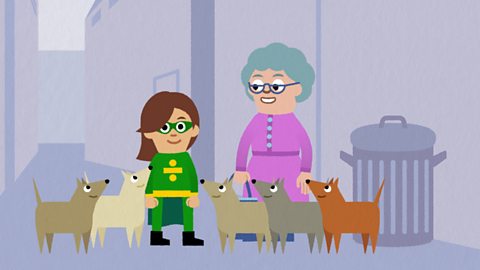Video summary
Baz and Dave need to share out some kittens ready to go to their new homes!
At first it seems simple, eight kittens shared between four friends.
Things quickly get more complicated when they discover Sally is allergic to cats.
She canβt take any kittens, and Mrs Barker has all those dogs.
There are remainders involved, new calculations to solve and the inverse to be explored.
This sounds like a job for Divider Girl and Multiplication Boy!
The superheroes of A World Without Maths show Baz and Dave that they both have the skills to help solve this problem.
But who will be the first to get to the bottom of it? Will they manage to find new homes for all those cute fluffy kittens? And will Baz ever get that cup of tea he was after?
This clip is from the series A World Without Maths.
Teacher Notes
Key Stage 1:
You could present your class with the same problems as the story and give them toys and boxes or sorting hoops to act out the problem.
They might use an existing array to talk about how many dots are in each row, how many rows there are and how many dots there are in total.
They might write the related multiplication and division sentences for the array.
Pupils could use objects or drawings to create their own arrays to show the relationship between multiplication and division.
You could create number trios (placing three numbers on the corners of an equilateral triangle) to explore how these show related calculations in multiplication and division. For example, 4 and 7 at the bottom and 28 at the top show that 4 x 7 = 28, 7 x 4 = 28 and that 28 Γ· 4 = 7 and 28 Γ· 7 = 4.
Key Stage 2:
You could get your class to use drawings to create their own arrays to show the relationship between multiplication and division.
They could then write out all four calculations that the array shows.
Children might solve word problems that present multiplication or division problems. For example: Baz and Dave are going to share out all the cat food they have. They have 24 tins and each box can hold 4 tins. How many boxes will they need?
Or, Baz and Dave have some left over cat food to give away to the friends who are taking the kittens. They have 6 boxes. In each box are 4 tins. How many tins do they have in altogether?
This clip will be relevant for teaching Maths at KS1 and KS2 in England and Wales, and First and Second Level in Scotland.
How to use mental methods to multiply. video
Mr and Mrs Sharma canβt work out how many sausages to buy for a party, so they try to count using chocolate buttons, but are getting into a right mess!

Multiples of two, five and ten. video
Multiplication Boy and Divider Girl keep their maths superpowers sharp with a competition to count in twos, fives and tens.

How to use arrays to multiply. video
Multiplication Boy helps Mr Sharma buy pencils for the school, using arrays to multiply.

What is multiplication? video
Multiplication Boy uses repeated addition to help Dave work out how many bricks he needs to build a new wall for Mrs Sharma.

Dividing using repeated subtraction. video
Divider Girl uses repeated subtraction to help Mrs Barker with a division problem involving some hungry pups.

How to use mental methods to divide. video
Divider Girl helps Charlie with a division problem, using her multiplication facts.
